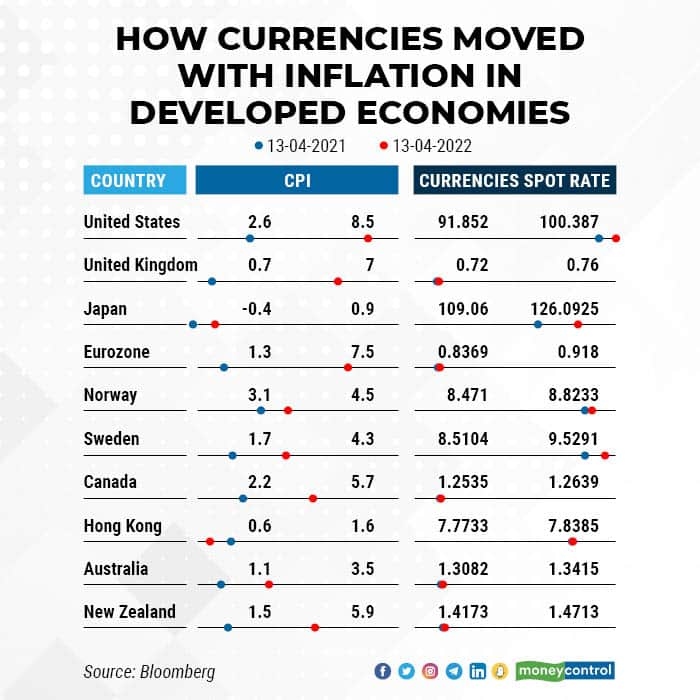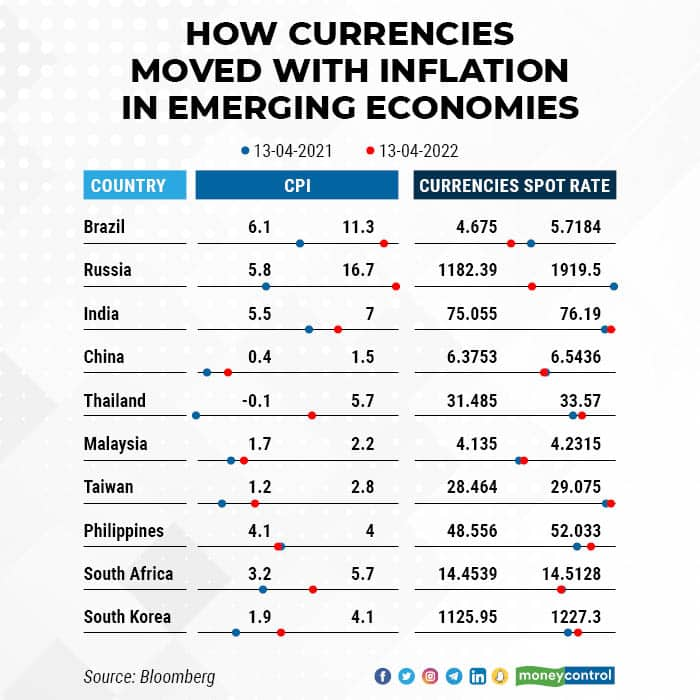



In an inflationary environment, the strength of domestic currencies and of monetary levers are tested. While the ones in developed countries have largely stayed stable, there have been dips and climbs in the emerging economies.
Also read: Inflation is a clear and present danger
In the developed world, Japan’s yen seems to have reacted most sensitively. It has been weakening rapidly since early March and because there is a nagging fear in the market that the Bank of Japan may delay raising interest rates. The country has a history of keeping its currency weak to let its export-led economy flourish.
 Graphics: Upnesh Raval; Data compiled by Ritesh Presswala
Graphics: Upnesh Raval; Data compiled by Ritesh Presswala
Russia’s ruble and Brazil’s real have strengthened considerably, despite the inflationary trend. The ruble’s recovery has been well-engineered–with aggressive rate hikes, demanding payment for natural gas exports in the currency and capital controls such as prohibiting transfer of personal assets to foreign accounts. Brazil’s real too was supported by the country’s central bank intervention–the country’s benchmark rate is at 11.75%, which is the highest in five years. The real was helped too by the rising commodity rates.

Discover the latest Business News, Sensex, and Nifty updates. Obtain Personal Finance insights, tax queries, and expert opinions on Moneycontrol or download the Moneycontrol App to stay updated!
Find the best of Al News in one place, specially curated for you every weekend.
Stay on top of the latest tech trends and biggest startup news.